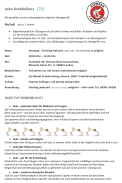When it comes to real estate agreements, an easement agreement is one of the most common types that people encounter. An easement is essentially a legal right to use someone else`s property in a designated way. This can include things like accessing a driveway or using a portion of land for a specific purpose. If you are considering creating an easement agreement, there are a few important steps to follow to ensure that the agreement is clear, enforceable, and meets the needs of all parties involved.
1. Identify the parties: The first step in creating an easement agreement is to identify the parties involved. This typically includes the property owner who is granting the easement (the servient estate) and the person or entity who will be using the easement (the dominant estate). The agreement should clearly identify these parties and their respective roles in the easement.
2. Define the easement: The next step is to define the scope of the easement. This includes specifying the exact location of the easement, the duration of the easement (if it is temporary), and the specific purpose for which the easement will be used. If the easement is for a specific use, such as a driveway or utility access, it should be clearly stated in the agreement.
3. Address maintenance responsibilities: It`s important to address maintenance responsibilities in the easement agreement, particularly if the easement will be used for ongoing purposes. The agreement should specify which party is responsible for maintaining the easement area, and how any necessary maintenance will be carried out. This can include things like snow removal, landscaping, or repairs.
4. Address compensation (if necessary): In some cases, the property owner may require compensation for granting an easement. This may include a one-time payment or ongoing payments for the use of the easement. If compensation is required, the agreement should clearly state the terms of the compensation and how payments will be made.
5. Include legal language: Easement agreements are legal documents, so it`s important to include appropriate legal language. This ensures that the agreement is enforceable and legally binding. It`s advisable to work with a lawyer to draft the agreement to ensure that it meets all legal requirements.
Overall, creating an easement agreement requires careful consideration and attention to detail. By following these steps and working with a lawyer if needed, you can create an effective easement agreement that meets the needs of all parties involved.











